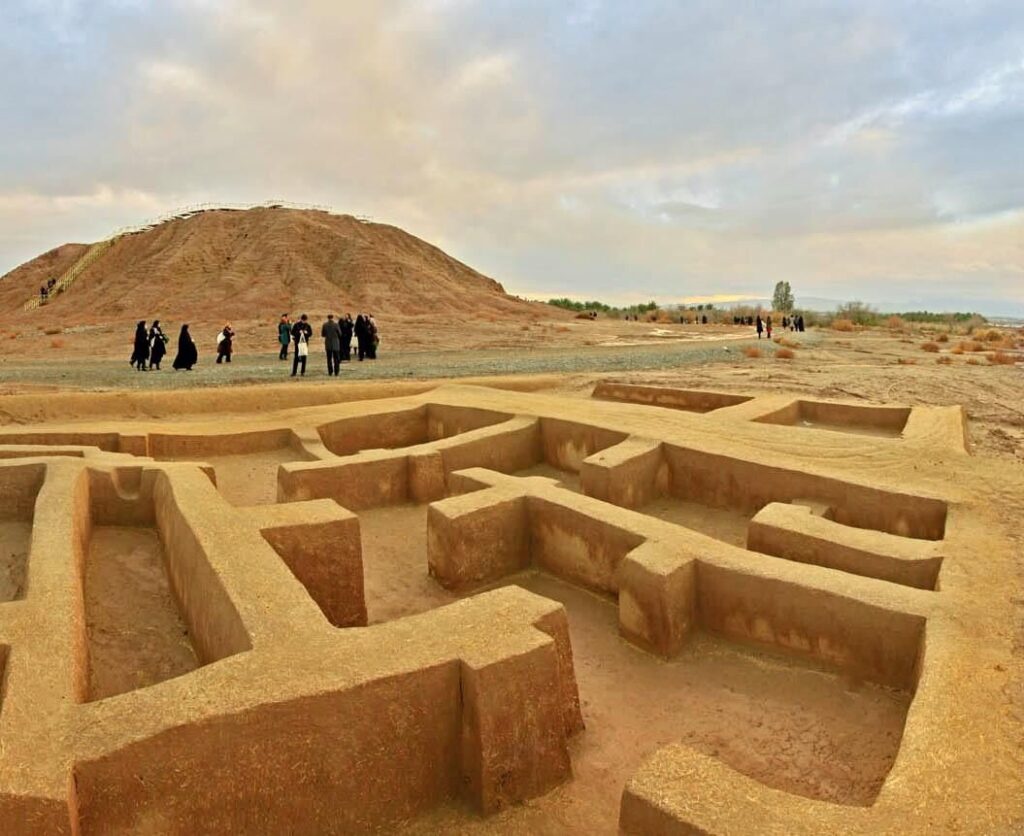Tehran – For the first time, aviation mapping and imaging was carried out at the major archaeological site in Jiroft, a region famous for its Bronze Age ruins dating back to the 3rd millennium BC.
According to Gader Silvani, an official responsible for the historic site in southern Karman province, the initiative has taken an important step in documenting and preservation in one of Iran’s most historic areas.
The aerial survey took place at an ancient city’s old Giroft and a small site known as Qal’eh Kuchak (a small fortress), officials said Monday. “This project aims to enhance the documentation process and support ongoing archaeological and conservation activities.”
Located in southern Iran, the Giroft retains a very historical and cultural significance and is widely believed to be a cradle of civilization.
“This is the first time such detailed aerial images and mapping has been done in the area,” Silvani said. “The project was made possible through collaboration with Agourchin Co., a contractor for Jiroft Airport Project, which provides high-resolution photos and video footage.”
At the beginning of March, Iran’s Minister of Cultural Heritage, Tourism and Crafts, Seyed Reza Salehiamiri highlighted the global importance of the ancient civilization of Giroft and called for greater efforts to demonstrate historic and cultural values to the world.
At a meeting of the Administrative Council in Jiroft, Salehi-Amiri highlighted the region’s deep historical roots, noting that Jiroft is not just an ancient city, but a symbol of identity, history and civilization. “If other countries own such civilizations, they will build a national economy around them. Unfortunately, we have not yet fully presented the civilized values of Giroft to the world,” he said.
Jiroft is recognized as the centre of early Bronze Age cultures, often referred to as Jiroft or Halilrud (Halil River) culture. It is known for its distinctive artifacts and extensive urban settlements, and sheds light on one of the earliest civilizations in the region, including the present states of Karman and Sistanbarushestan.
The notable findings in the Giroft region come from the early 21st century, when severe floods along the Khalil River excavated previously unknown tombs and revealed artifacts believed to date back to the early Bronze Age (late 3rd century BC).
The report initially described the scene of “ancient objects floating on the surface of the water.” Recognizing its value, villagers were affected by two years of drought and flocked the riverbank the next day to search for relics from five,000 years ago.
Despite its historical importance, geological factors led to the monitoring of the site by tourists and archaeologists, who had a more focus on places like Mesopotamia, about 1,000 km away.
The layers of sediment were washed away and the bodies of ancient cemeteries were exposed. Locals and marauders quickly realized the importance of their discoveries and moved to collect and sell artifacts they found.
Cultural heritage expert Saeid Shahrokhi says Jiroft Plaine is an interconnected size that cannot be seen individually by various regions such as Dakyanus, Konar Sandal and other regions. “Human life has continued this plain for thousands of years, making it a unique environment for historical continuity and cultural richness.”
morning

